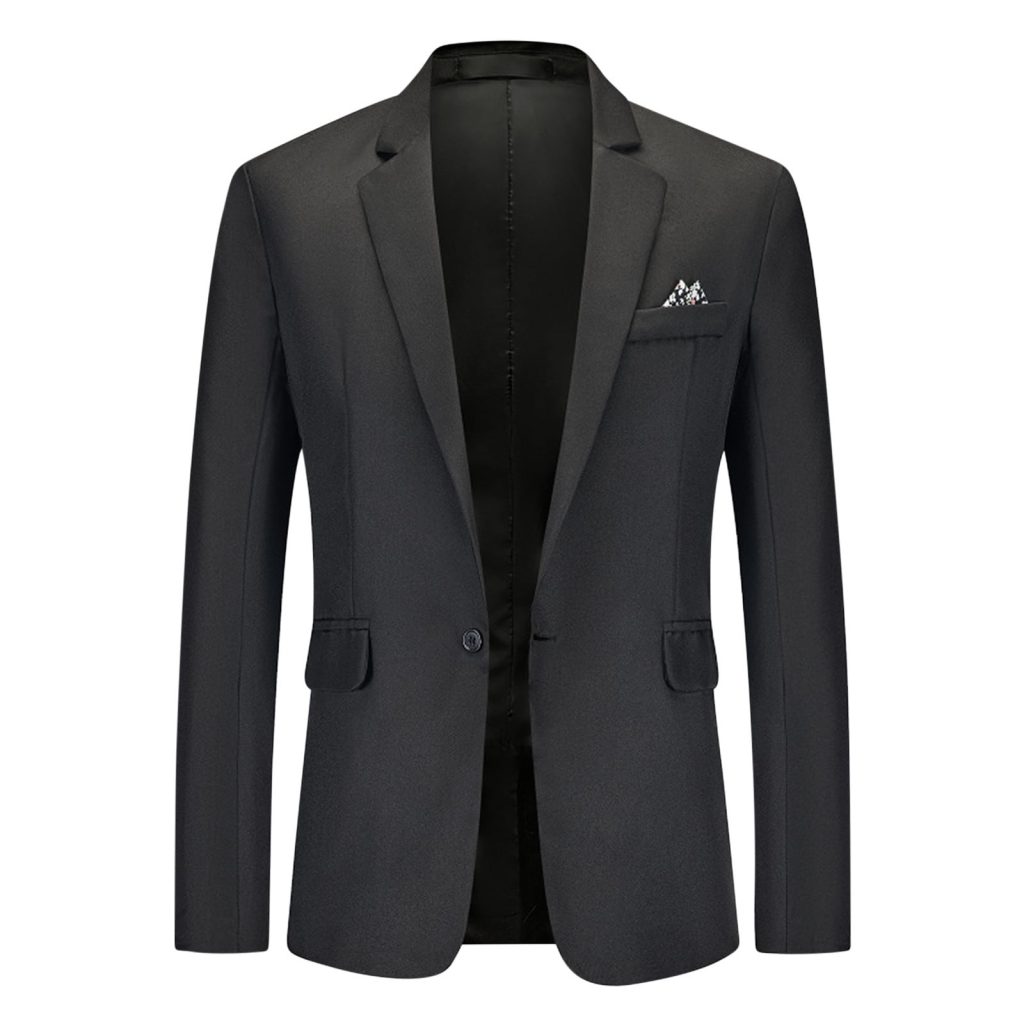Introduction
How to iron a suit jacket? In 2024 ironing a suit jacket requires special care and attention to ensure that the fabric doesn’t get damaged and the garment retains its shape and structure. A properly pressed suit jacket not only enhances your overall appearance but also prolongs the lifespan of the garment. In this comprehensive guide, we will provide you with a step-by-step process to help you iron your suit jacket effectively and safely.

Before you start ironing your suit jacket, consider the following:
- Check the Care Label: Read the care label on your suit jacket for specific instructions and recommended ironing temperatures. Different fabrics and blends have different heat tolerances, so it’s important to follow the manufacturer’s guidelines.
- Choose the Right Ironing Equipment: Use a good-quality steam iron with adjustable temperature settings. Ensure that the iron has been filled with distilled water for optimal steam production and to prevent mineral buildup.
- Prepare a clean and smooth Ironing Surface: Use an ironing board or a clean, flat, and smooth surface to provide the necessary support for ironing.
Follow these steps to effectively iron your suit jacket:
Set Up the Ironing Area:
Clear the Space: Ensure that you have enough space to work comfortably and that there are no obstacles or distractions around your ironing area.
Heat Up the Iron: Turn on the steam iron and allow it to heat up to the appropriate temperature based on the fabric of your leisure suits.
Prepare the Jacket:
Empty the Pockets: Before ironing, empty all pockets to prevent any unwanted bulges or damage.
Turn the Jacket Inside Out: Turning the suit jacket inside out helps protect the outer fabric from direct heat and ensures the lining receives proper attention during ironing.
Test for Suitability:
Perform a Heat Test: Before ironing the entire jacket, perform a heat test by ironing a small inconspicuous area to ensure that the fabric can withstand the heat without causing damage or discoloration.

Steam and Iron:
Use Steam: With the suit jacket inside out, start by filling the iron with distilled water and set it to generate steam. Gently press the steam button to dampen the fabric, but be careful not to saturate it.
Begin with the Lining: Place the jacket on the ironing surface with the lining facing up. Smooth out any wrinkles with your hands and gently press the iron over the lining, applying light pressure. Move the iron in straight, smooth strokes to avoid creating creases or shine on the fabric.
Move to the Outer Fabric: Once you have ironed the lining, turn the jacket right-side out. Smooth out any wrinkles on the outer fabric and apply the iron using the same light pressure and smooth strokes. Be particularly careful around buttons, pockets, and any embellishments.
Focus on Troublesome Areas: Pay extra attention to areas prone to wrinkles, such as the collar, lapels, and cuffs. Use the tip of the iron to precisely target these areas and ensure they are properly pressed.
Hang and Cool:
Hang the Jacket: After ironing, hang the suit jacket on a suitable hanger to allow it to cool and allow any remaining moisture to evaporate. This helps the fabric retain its shape and prevents unnecessary wrinkling.
Allow Sufficient Cooling Time: Avoid wearing the track suits immediately after ironing. Allow it to cool completely before wearing or storing to prevent wrinkles from forming.
Bonus Tips:
- Use a Pressing Cloth: If you’re concerned about direct contact between the iron and the jacket fabric, place a clean, lightweight pressing cloth, such as a cotton or linen cloth, between the iron and the surface of the fabric. This provides an extra layer of protection.
- Seek Professional Help: If you’re uncertain about ironing your suit jacket or it requires extensive pressing, consider taking it to a professional dry cleaner. They have the necessary expertise and equipment to handle delicate fabrics and ensure the utmost care for your jacket.

How to match a suit jacket – How to iron a suit jacket?
The suit jacket is a timeless and essential piece in a man’s wardrobe, offering versatility, sophistication, and a polished appearance. When styling a suit jacket, it’s important to consider various factors, including the occasion, desired level of formality, and personal style.
Formal Business Look:
Pair with Suit Trousers: For a classic formal look, pair your maroon suits with matching suit trousers in the same fabric and color. This combination creates a unified, polished appearance suitable for business meetings, formal events, or any occasion that requires a professional dress code.
Choose a Dress Shirt: Opt for a crisp, tailored dress shirt in a complementary color. Solid colors such as white, light blue, or pastels are safe and versatile choices. For a more daring look, you can experiment with subtle patterns or textures.
Add a Tie: Complete the formal business look by pairing your suit jacket and dress shirt with a tie. Choose a tie that coordinates with the color scheme and patterns of your outfit. Go for classic silk or textured options for a refined appearance.
Read the Care Label
Always begin by checking the care label on your suit jacket for specific ironing instructions. Some fabrics, such as wool or silk, may require lower heat settings or dry cleaning only. Knowing the fabric composition helps you choose the correct temperature and method.
Prepare Your Workspace
- Ironing Board: Set up a clean ironing board with a suitable cover. Using a padded or wool cover can help prevent direct heat contact and reduce the risk of shine marks.
- Iron: Select the appropriate heat setting based on the fabric. For most suit jackets made of wool blends, a medium-high heat setting without steam is ideal. Test a hidden area first to ensure the heat is not too high.
Remove Excess Moisture – How to iron a suit jacket?
If the jacket is slightly damp (from hanging in a steamy bathroom or being sprayed lightly with water), it will be easier to iron. Avoid ironing a completely wet jacket, as this can damage the fabric and leave watermarks.
Start with the Inside
Turn the jacket inside out to iron the inner parts first. This approach helps prevent any accidental shine on the outer fabric. Focus on the seams, collar, and any visible inner linings. Use a lower heat setting if the lining is delicate.
Iron the Sleeves
- Unbutton the Cuffs: This allows you to iron the sleeve smoothly from end to end.
- Start at the Cuff: Place the sleeve flat on the ironing board, starting with the cuff and working your way up to the shoulder. Gently stretch the fabric as you go to avoid creating creases in the wrong places.
- Flip and Repeat: Iron the other side of the sleeve in the same manner.
Iron the Body
- Shoulders and Collar: Begin with the shoulders, gently stretching and ironing along the seams. Move to the collar, being careful around buttons and edges.
- Front Panels: Lay one half of the jacket flat on the board, with the back of the jacket hanging off. Smoothly iron from the top down, avoiding the button area to prevent flattening or damaging them. Repeat on the other side.
- Back Panel: If possible, iron the back panel by draping the jacket over the narrow end of the ironing board. Work from the center outwards to the sides, being cautious around any vents.
Use Proper Techniques
- Light Pressure: Apply light, even pressure with the iron, moving in the direction of the fabric grain. Heavy pressure can damage the fabric or create shine marks.
- Steam: If your iron has a steam function, use it sparingly on wool or cotton blends. Steam can help relax wrinkles but should be used cautiously to avoid dampening the fabric too much.
- Avoid Over-Ironing: Repeatedly ironing the same spot can lead to damage or shine. If a wrinkle won’t budge, let the fabric rest and try again later.
 Finishing Touches
Finishing Touches
- Hang Immediately: Once you’ve finished ironing, hang the jacket on a well-padded hanger to cool and settle into shape.
- Air Out: Allow the jacket to air for a while before wearing or storing it, ensuring it’s completely dry.
Tips and Precautions
- Test First: Always test an inconspicuous area before ironing the whole jacket.
- Be Gentle: Suit jackets are often made of delicate materials that require gentle handling.
- No Direct Heat: Avoid direct heat on buttons, labels, and synthetic trims to prevent melting or damage.
- Professional Cleaning: For heavily soiled or delicate jackets, consider professional dry cleaning.
Smart Casual Look:
Pair with Dress Pants: Combine your suit jacket with dress pants in a different color or fabric for a smart casual look. Opt for pants in cotton, linen, or chinos to create a more relaxed and versatile ensemble.
Choose a Dress Shirt or a Polo Shirt: Depending on the level of formality desired, pair your suit jacket with a tailored dress shirt or a more casual polo shirt. This provides a balance between sophistication and ease.
Opt for a Pocket Square: Add an extra touch of style and personality to your smart casual look by incorporating a pocket square into your suit jacket’s breast pocket. Choose a pocket square that complements the color scheme and patterns of your outfit.
Casual Look:
Pair with Jeans: For a casual yet stylish look, pair your suit jacket with well-fitted jeans. Opt for dark-wash jeans for a more elevated appearance or lighter washes for a laid-back and effortless vibe.
Choose a T-Shirt or a Polo Shirt: Pair your suit jacket with a casual T-shirt or a polo shirt for a relaxed and contemporary look. Opt for neutral colors or subtle patterns that complement the overall outfit.
Accessorize with a Belt and Casual Shoes: Accessorize your casual look with a stylish belt that complements the color of your suit jacket. Complete the outfit with casual shoes such as sneakers, loafers, or boat shoes for a comfortable and fashionable finish.

In conclusion
Ironing a suit jacket requires patience, attention to detail, and the right technique to avoid damaging the fabric. By following these step-by-step instructions and incorporating the bonus tips, you can effectively press your suit jacket, ensuring that it retains its shape, structure, and overall crisp appearance. With proper ironing, your suit jacket will always look its best, contributing to a polished and sophisticated image.
